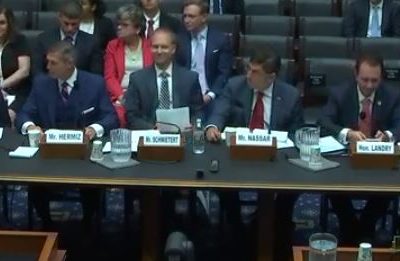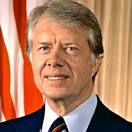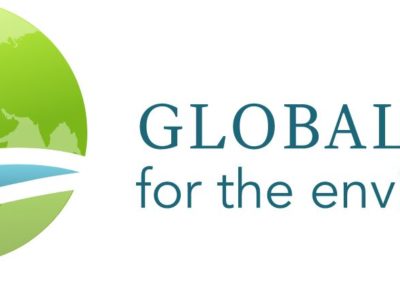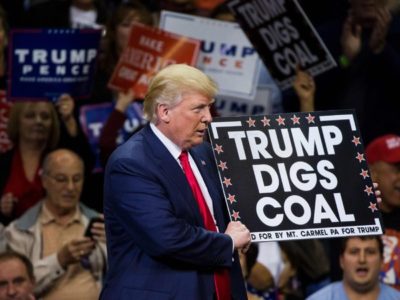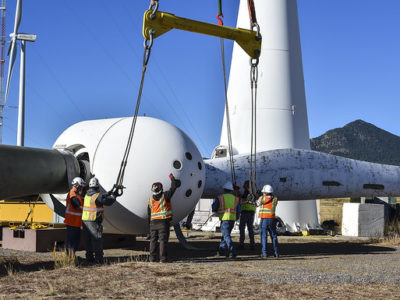The Trump Administration v. Everybody Else
House Committee hearing highlights dissatisfaction with and flaws in the proposed SAFE Rule.
CARB Chair Mary Nichols sits on a panel with industry representatives and others to discuss the Administration's proposed rollback of Obama-era fuel economy standards. Today, the House Committee on Energy and Commerce’s Subcommittee on Consumer Protection and Subcommittee on Environment and Climate Change held a joint hearing entitled “Driving in Reverse: The Administration’s Rollback of Fuel Economy and Clean Car Standards.” The hearing examined the pro...
CONTINUE READINGGuest Blogger Nick Bryner: Cooking the Books While Cooking the Planet: A First Look at the EPA’s ACE Rule
Final Rule Changes Baseline Assumptions & Approach to Cost-Benefit Analysis in Attempt to Justify Weak Standards
Yesterday, the Trump EPA released its long-awaited response to the Obama-era Clean Power Plan. At first glance, the final rule has been carefully crafted in an attempt to avoid several glaring legal vulnerabilities of the rule—and to obscure the obvious inadequacy of the Administration’s response to climate change. The EPA has found many contradictory ways to justify its action. For over two years, Administrators Pruitt and Wheeler, along with their boss, have dec...
CONTINUE READINGThe Forgotten Environmental Legacy of Jimmy Carter
Carter saved millions of acres of wilderness, signed the Superfund law, and began the renewables revolution.
Many people today know Jimmy Carter as an ex-President who has strongly advocated for human rights. His Presidency is probably best remembered for the Iranian Hostage crisis. His post-presidential career was at least as notable as his time in the White House. Historians find his presidency flawed by micro-management and lack of rapport with the Democrats controlling Congress. Nevertheless, we owe Carter a considerable debt for his environmentally related achievements. ...
CONTINUE READINGThe evolving law of state protection of environmental resources on federal lands
Recent cases may expand the scope of states to protect environmental resources on federal public lands
One theme in environmental law and policy over the past two years has been an increasing conflict between states and the federal government – with a range of states (particularly those with Democratic governors and legislatures) challenging the federal government on environmental matters and seeking to be more aggressive in protecting the environment. One flashpoint for this conflict has been in the context of public lands, and there have been enough recent, importa...
CONTINUE READINGNew Report: Increasing Energy Efficiency at Low-Income Multifamily Properties
Join Berkeley/UCLA Law expert webinar Thursday at 10am to discuss top findings
As California moves aggressively to reduce greenhouse gas emissions from buildings, will the state leave behind its low-income residents? Many of these residents -- 40% of the state's population -- live in multifamily housing units and apartments, where they have limited access to in-home retrofits that could save them on their energy bills and reduce overall emissions. These retrofits require upfront capital that low-income tenants may lack, as well as approval an...
CONTINUE READINGGuest Bloggers Will Martin and Michael P. Vandenbergh: Can Private Environmental Governance Address Nationalism’s Threat To International Environmental Law?
As Some Nations Retreat From Internationalist Approaches to Transnational Environmental Challenges, Corporate Actions May Play a Larger Role
The withdrawal by Japan from the International Whaling Convention and its related Commission in December 2018 and the on-off threat by the new leader of Brazil to withdraw from the Paris Agreement on Climate Change are the latest signals that International Environmental Law (“IEL”) is under siege. The move by Japan and the possible withdrawal by Brazil follow on the heels of President Trump’s decision to withdraw the United States from the Paris Agreement and the e...
CONTINUE READINGThere Will Be No Global Environmental Constitution (at Least Not Now)
The proposed Global Pact for the Environment stumbles, as expected
In January, I asked in a blog post's title “Will There Be a Global Environmental Constitution?” and wrote that “some observers are concerned that international environmental law remains insufficient in its scope, depth of commitments, and breadth of participation. Some legal scholars, activists, and others advocate for a comprehensive Global Pact for the Environment.” In response, the UN General Assembly appointed an ad hoc working group to discuss possible opti...
CONTINUE READINGPutting the Squeeze on Coal
It’s not enough to eliminate coal-fired plants. We have to cut back on coal production and sale.
Coal use by American utilities has declined sharply and will continue to decline. But we shouldn’t focus solely on U.S. emissions. But the industry also exports coal, and there’s been a big surge in coal exports in the past two years, much of it involving India. So it’s not enough to curtail coal use in the U.S. We also need reduce coal production. There’s been progress in that direction, but we still have a long way to go. Coal production is down about 25% sin...
CONTINUE READINGUnderstanding the Green Energy Transition: A Conversation with David Spence about EnergyTradeoffs.com
UCLA Professor of Law and Legal Planet contributor William Boyd recently interviewed David Spence of the University of Texas School of Law about EnergyTradeoffs.com, a new web site that explores some under-discussed aspects of the green energy transition. BOYD: Tell me about EnergyTradeoffs.com. Why this web site and why now? SPENCE: EnergyTradeoffs.com is aimed at people who produce or read law and policy scholarship about the transition to a greener energy mi...
CONTINUE READINGPollution Bursts and Public Health
EPA needs to give much more serious thought to controlling bursts of pollution.
When a facility installs and operates the required pollution control equipment, we normally think of the pollution problem as solved. But there still may be bursts of pollution associated with start-up, shut-down, accidents or external events. A recent study of pollution in Texas shows that these events have substantial health impacts, involving significant deaths and overall costs of about a quarter billion dollars a year in that state. Ironically, the study comes o...
CONTINUE READING



